- Courses
- GS Full Course 1 Year
- GS Full Course 2 Year
- GS Full Course 3 Year
- GS Full Course Till Selection
- Online Program
- GS Recorded Course
- NCERT (Recorded 500+ Hours)
- Polity Recorded Course
- Geography Recorded Course
- Economy Recorded Course
- AMAC Recorded Course
- Modern India, Post Independence & World History
- Environment Recoded Course
- Governance Recoded Course
- Science & Tech. Recoded Course
- International Relations and Internal Security Recorded Course
- Disaster Management Module Course
- Ethics Recoded Course
- Essay Recoded Course
- Current Affairs Recoded Course
- CSAT
- 5 LAYERED ARJUNA Mentorship
- Public Administration Optional
- ABOUT US
- OUR TOPPERS
- TEST SERIES
- FREE STUDY MATERIAL
- VIDEOS
- CONTACT US
PLACES IN NEWS 17th MARCH 2025
PLACES IN NEWS 17th MARCH 2025
17-03-2025

Nagorno-Karabakh region
Why in news?
- Armenia and Azerbaijan have reached a peace deal to resolve their nearly 40-year conflict over the disputed Nagorno-Karabakh region, aiming to bring lasting stability to the region.
About Nagorno-Karabakh region:
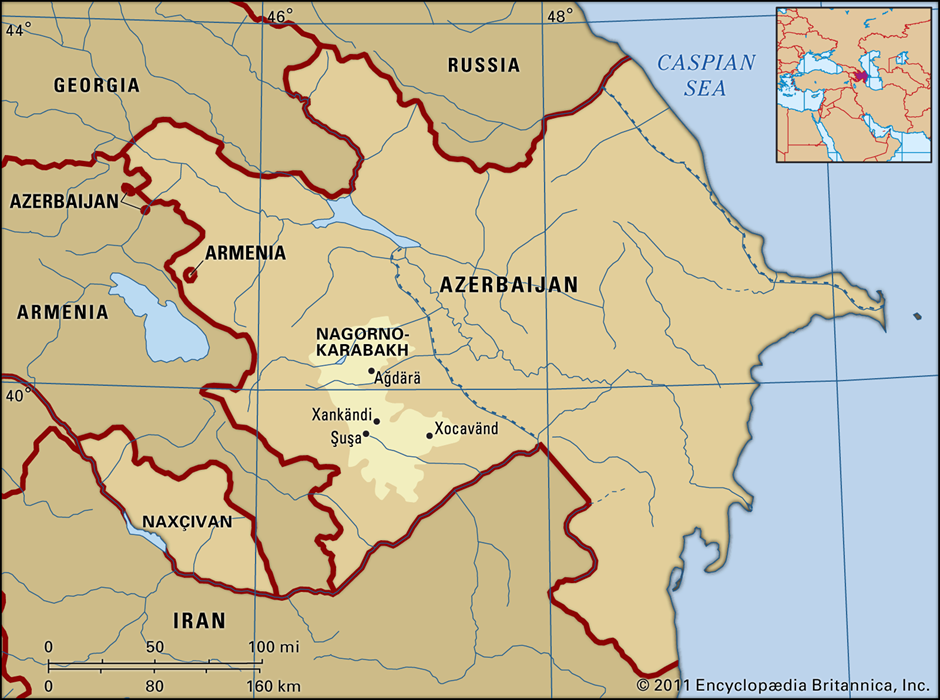
- Location and geography:
- Nagorno-Karabakh, also known as Artsakh by Armenians, is a landlocked, mountainous region in the South Caucasus.
- It lies on the north-eastern flank of the Karabakh Range of the Lesser Caucasus, extending from the crest line of the range to the Kura River lowland.
- The region exhibits diverse landscapes, ranging from steppe areas near the Kura lowland to dense oak, hornbeam, and beech forests on lower mountain slopes.
- Higher elevations feature birchwood forests and alpine meadows, contributing to a unique ecological system.
- Origin of Dispute:
- Following the Russian Empire’s collapse in 1917, both Armenia and Azerbaijan laid claim to Nagorno-Karabakh, leading to ongoing territorial tensions.
- The Soviet Union designated Nagorno-Karabakh as an autonomous region within Azerbaijan in the 1920s, despite its predominantly ethnic Armenian population.
- Conflict Timeline:
- 1991: After the Soviet Union's collapse, Nagorno-Karabakh declared independence, sparking a full-scale war between Armenia and Azerbaijan.
- 1992-94: The First Karabakh War resulted in Armenian forces seizing the region and adjacent Azerbaijani territories, displacing many Azerbaijanis.
- 2020: The Second Karabakh War led to Azerbaijan reclaiming much of the territory in a six-week conflict.
- 2023: Azerbaijan launched a military offensive, regaining full control of Nagorno-Karabakh.
- 2024: Nagorno-Karabakh was officially dissolved.
- Current Status:
- Nagorno-Karabakh is internationally recognised as part of Azerbaijan.
- The primary conflict centred on ethnic and territorial disputes, with Armenians seeking either independence or unification with Armenia.
Pilibhit Tiger Reserve (PTR)
Why in news?
- Pilibhit Tiger Reserve (PTR) is being developed as a new sanctuary for rhinos from Nepal, aiming to establish a permanent habitat for the migrating pachyderms as conservation efforts progress.
About Pilibhit Tiger Reserve (PTR):
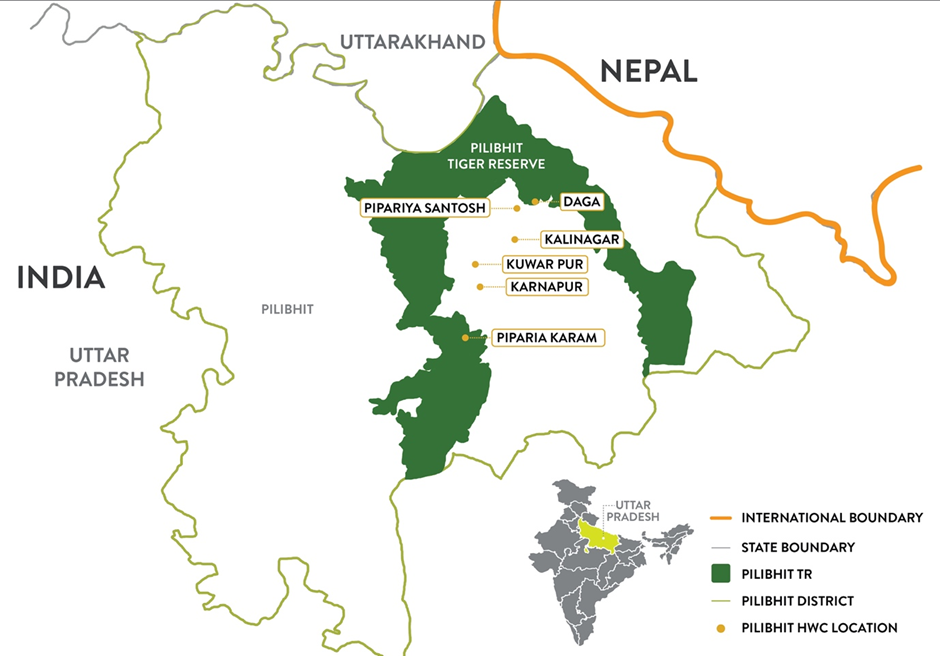
- Location:
- Pilibhit Tiger Reserve (PTR) is situated in Pilibhit district, Uttar Pradesh, along the India-Nepal border in the Terai Arc Landscape of the upper Gangetic Plain.
- The habitat consists of sal forests, tall grasslands, and swamps, maintained by periodic flooding from rivers.
- The Sharda Sagar Dam, extending 22 km, forms a natural boundary of the reserve.
- The Gomti River originates from PTR, which also serves as the catchment area for the Sharda, Chuka, and Mala Khannot rivers.
2. Flora & Fauna:
- The reserve is home to diverse ecosystems, including dense forests, grasslands, and wetlands, supporting a wide variety of species.
- The reserve hosts 65+ tigers, along with leopard cats, barasingha, blackbuck, fishing cats, barking deer, chital, hog deer, sambar, and sloth bears.
- PTR is known for 450 bird species, including the Sarus crane, hornbills, eagles, swamp francolin, and peafowl.
- Reptiles found in the reserve include the marsh crocodile, gharial, and various snake species. The rivers support 79 fish species.
Golden Temple
Why in news?
- A man attacked devotees inside Amritsar’s Golden Temple, injuring five people before being restrained.
About Golden Temple:
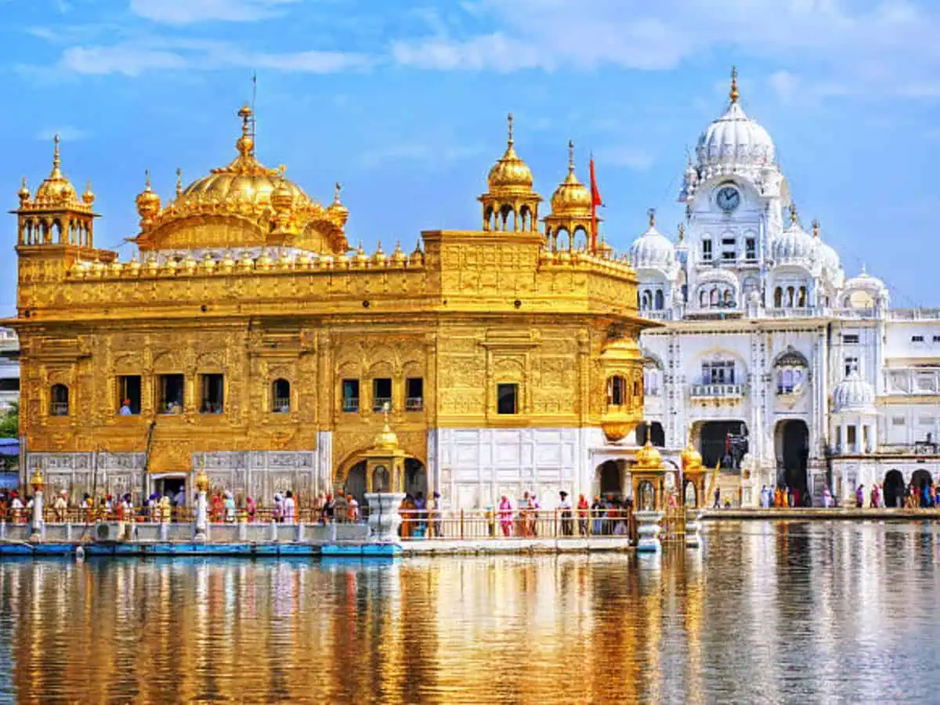
- The Golden Temple, also known as Sri Harmandir Sahib, is located in Amritsar, Punjab, India.
- It is situated in the heart of Amritsar city and is surrounded by the sacred Amrit Sarovar (holy tank).
- Establishment:
- The foundation of the Golden Temple was laid in 1581 under the guidance of Guru Arjan Dev, the fifth Sikh Guru.
- The foundation stone was laid by Mian Mir, a Sufi saint from Lahore, symbolising interfaith harmony.
- The construction was completed in 1604, and Guru Granth Sahib, the holy scripture of Sikhism, was installed inside.
- The temple was later renovated with gold plating in the early 19th century by Maharaja Ranjit Singh, earning it the name Golden Temple.
- Importance in Sikh Religion:
- The Golden Temple is the holiest shrine in Sikhism and a symbol of spirituality and equality.
- The four entrances signify openness to all religions and communities.
- It houses the Guru Granth Sahib, the eternal Guru of Sikhs, and follows the tradition of continuous recitation of Gurbani (Sikh scriptures).
- The Langar (community kitchen) at the temple serves free meals to thousands daily, emphasising sewa (selfless service) and equality.
- The Akal Takht, the highest seat of Sikh temporal authority, is also located within the temple complex.
Great Nicobar
Why in news?
- The government has assured that the Great Nicobar Project will not cause tribal displacement, addressing opposition concerns over environmental and indigenous rights while emphasizing sustainable development in the region.
About Great Nicobar:
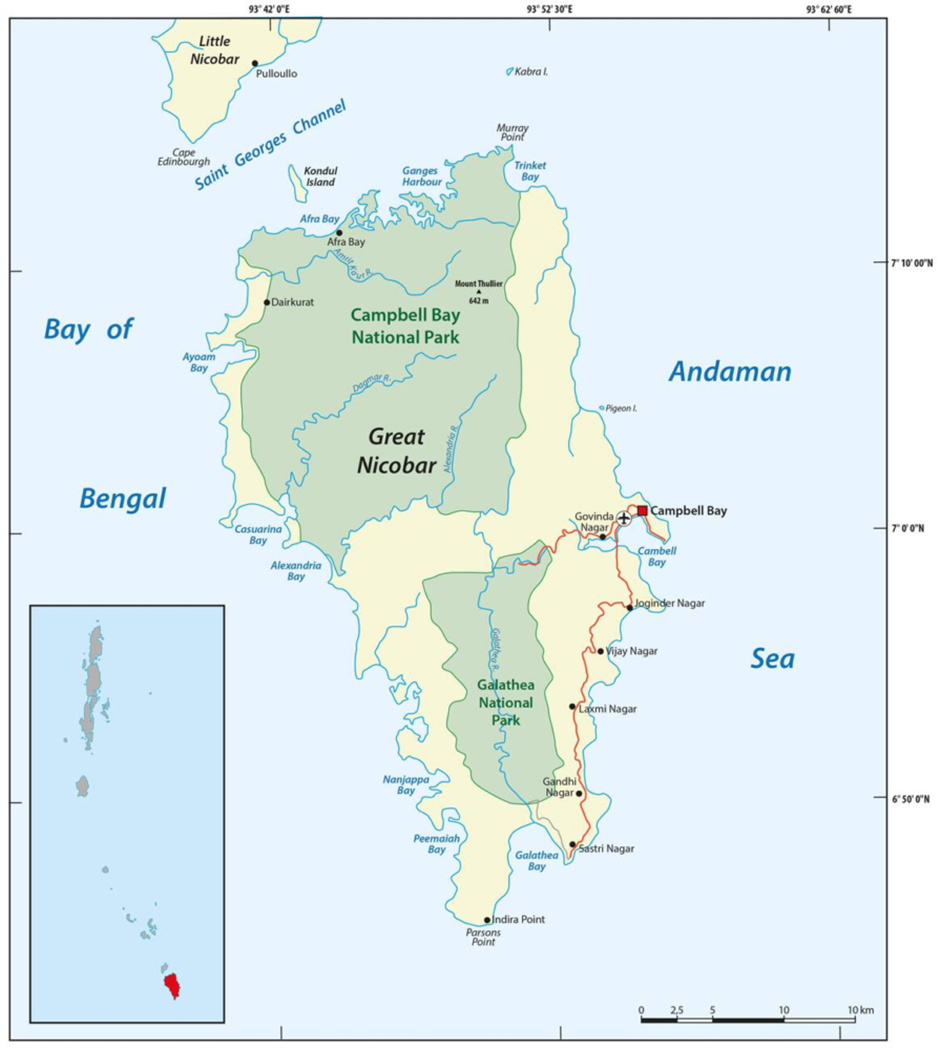
- Location:
- Great Nicobar is the southernmost and largest island of the Nicobar Islands, located in the Andaman and Nicobar Islands Union Territory of India.
- It lies close to the Indira Point, the southernmost point of India, and is situated strategically near the Malacca Strait, an important international shipping route.
- The island is seismically active and falls under Zone V, the highest earthquake-prone zone in India.
- Geography & Demography:
- Great Nicobar has a tropical rainforest climate, with dense evergreen forests, mangroves, and rich biodiversity.
- It is home to several endemic species, including the Nicobar megapode, Nicobar macaque, saltwater crocodile, and leatherback turtles.
- The island has a small population, primarily consisting of the Nicobarese and Shompen tribes, who are classified as Particularly Vulnerable Tribal Groups (PVTGs) and depend on forests and marine resources for survival.
- Proposed Great Nicobar Project:
- The Great Nicobar Development Project aims to transform the island into a strategic and economic hub.
- The project, estimated at ₹80,000 crore, includes:
- A transshipment port at Galathea Bay with a capacity of 16 million containers per year.
- An international airport for both civilian and military use.
- A township and tourism hub for economic growth.
- A power plant for sustainable energy needs.
- The project is expected to boost India’s maritime trade, improve connectivity, and enhance national security.
- Concerns Associated with the Project:
- Environmental Impact:
- The project requires the deforestation of 130 sq. km of pristine rainforest, affecting biodiversity and wildlife habitats.
- The Galathea Bay, part of the project area, is an important marine turtle habitat, raising concerns over the survival of the leatherback turtle population.
- Tribal Displacement and Cultural Impact:
- The indigenous Shompen and Nicobarese tribes face potential loss of traditional lands and livelihoods.
- Critics argue that large-scale infrastructure may disrupt their way of life and threaten their cultural identity.
- Seismic and Climate Risks:
- Great Nicobar lies in a high-seismic zone, making it prone to earthquakes and tsunamis.
- The project could increase coastal vulnerability and impact disaster resilience.
Phansad Wildlife Sanctuary
Why in news?
- Maharashtra's Phansad Wildlife Sanctuary conducted its first honey harvest, promoting sustainable beekeeping and biodiversity conservation in the region.
About Phansad Wildlife Sanctuary:
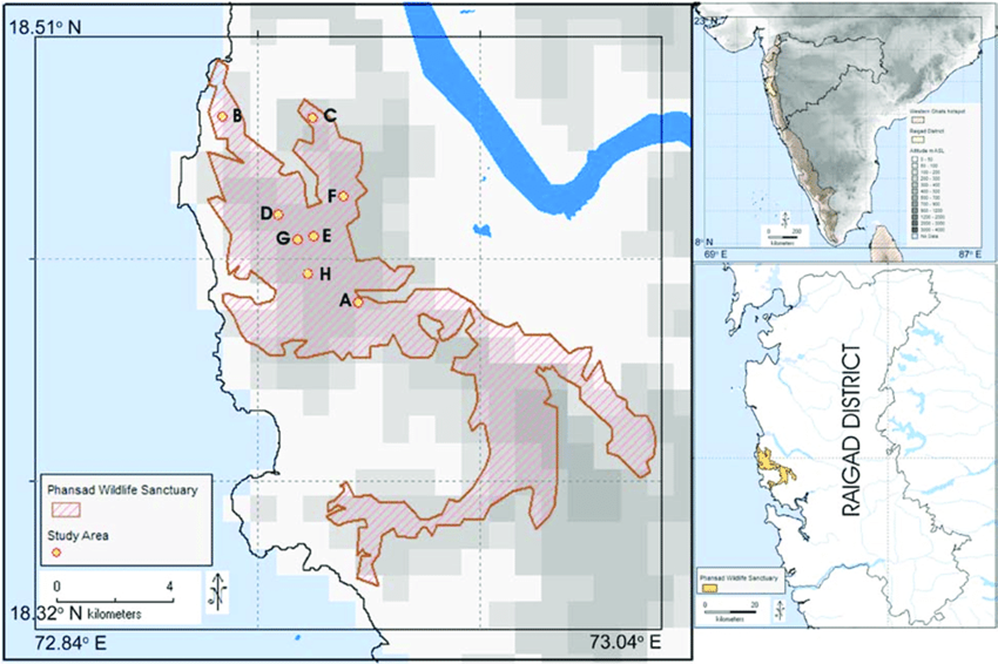
- Phansad Wildlife Sanctuary is located in the Murud and Roha talukas of Raigad district, Maharashtra, and was declared a sanctuary in 1986 to preserve the coastal woodland ecosystem of the Western Ghats.
- It spans 6,979 hectares and includes forests, grasslands, and wetlands. The sanctuary was previously a hunting reserve of the Siddhi Nawab of Janjira before being declared a protected area.
- The Eco-Sensitive Zone (ESZ) around the sanctuary covers 10.96 km², including 43 villages from Murud and Roha talukas.
- It features semi-evergreen, evergreen, mixed deciduous, and dry deciduous forests, along with patches of open grasslands (maals) and natural water sources (Gaan).
- The Indian giant squirrel, an indicator species, is found here along with 16 species of mammals, including gaur, sambar, barking deer, Indian pangolin, Indian leopard, dhole, and mouse deer.
- The sanctuary hosts over 200 bird species, including the critically endangered white-rumped vulture, Sri Lanka frogmouth, and spot-bellied eagle-owl.
- Reptilian species include the python, Bombay earth snake, and Giri’s bronzeback tree snake.
- Floral diversity includes 710 species of plants, with 179 tree species, such as Anjan, Phansada, teak, mango, and ficus varieties.
|
Also Read |
|
| FREE NIOS Books | |




